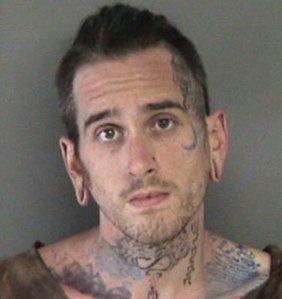The San Francisco Bay Area warehouse where a fire killed 36 people more than two years ago was an artist enclave where nobody was fully in charge, one of two men blamed for the fire testified Monday.

“It was an autonomous place where everybody brought their insights to the table,” Harris said. “There was a lot of shared understanding among the residents as far as what’s appropriate behavior, appropriate conduct. Everyone understood what the space is.”
Harris faces involuntary manslaughter charges along with Derick Almena, who is accused of illegally converting the so-called Ghost Ship warehouse into an artist live-work space where the Dec. 2, 2016, fire broke out during an electronic music concert.
Prosecutors allege that Almena, 49, stuffed the warehouse full of highly flammable furniture, pianos, rugs and other material and failed to provide smoke detectors, fire alarms, sprinklers and other required safety equipment. Prosecutors say Harris, 29, helped Almena convert the warehouse, collect rent and schedule concerts.
Both men pleaded no contest to 36 counts of manslaughter last summer. But a judge scuttled the plea deal after victims’ families objected to their proposed sentences as too lenient.
Judge James Cramer said he rejected the deal because he felt Almena did not show remorse.
Harris’ lawyers say he was made a scapegoat for the tragedy. He calmly testified Monday that he was a struggling tattoo artist and jewelry maker when he found a Craigslist ad offering a studio within the large warehouse for $750 per month. After moving in, he performed menial tasks such as cleaning the communal space and pooling the monthly rent to reduce his rent.
He described a free-floating space where every tenant built on or furnished the space as they saw fit and rejected prosecutors’ characterization that the warehouse was a “death trap.”
“I would have made sure my friends were not buried there,” he said.
He also denied being involved in organizing the concert, saying it happens every first Friday of the month, long before he became a tenant of the warehouse.
He said the landlord hired an unlicensed electrician to perform electrical work at the warehouse and an auto body shop next door. When the lights went out at the warehouse, Harris said he sometimes had to call workers at the auto body shop to replace the fuse.
Although fire inspectors never determined the cause of the fire, prosecutors raised the possibility that the fire was caused by electrical equipment.
Harris’ attorney, Curtis Briggs, said his client’s testimony showed the electrical system “was completely jerry-rigged and illegally done.”
“If the prosecution wants to advance that theory, then the owners and the electrician should be on the defense seat,” Briggs said.
The owner of the building has not been charged and has not spoken about the fire.
Prosecutors say a fire alarm went off the night of the fire, but no one heard it. The warehouse also lacked sprinklers to slow the blaze to give people time to escape.
Harris testified that when he first detected fire inside the warehouse, he repeatedly screamed “Fire! Get out!”, tried to put it out with an extinguisher he kept in his unit, and called 911. He said when the music stopped and the power went out, he turned on the flashlight on his cellphone to direct people to the front door.
He said he saw at least 10 people escape the fire.
“Eventually people stopped coming out,” he said in a halting voice.
He said he also broke down a locked gate to help firetrucks get closer to the fire and cooperated with federal investigators whom he met at a Red Cross shelter.
Federal fire officials traced the origin of the fire to a back corner of the warehouse’s ground floor but could not determine a cause.
Harris described Almena as a friend and artistic mentor who offered him reduced rent in exchange for his help around the warehouse.
“He was aware of my struggle, that my job had expired in San Francisco,” Harris said.
The men could face up to 36 years each if convicted on all counts.




















